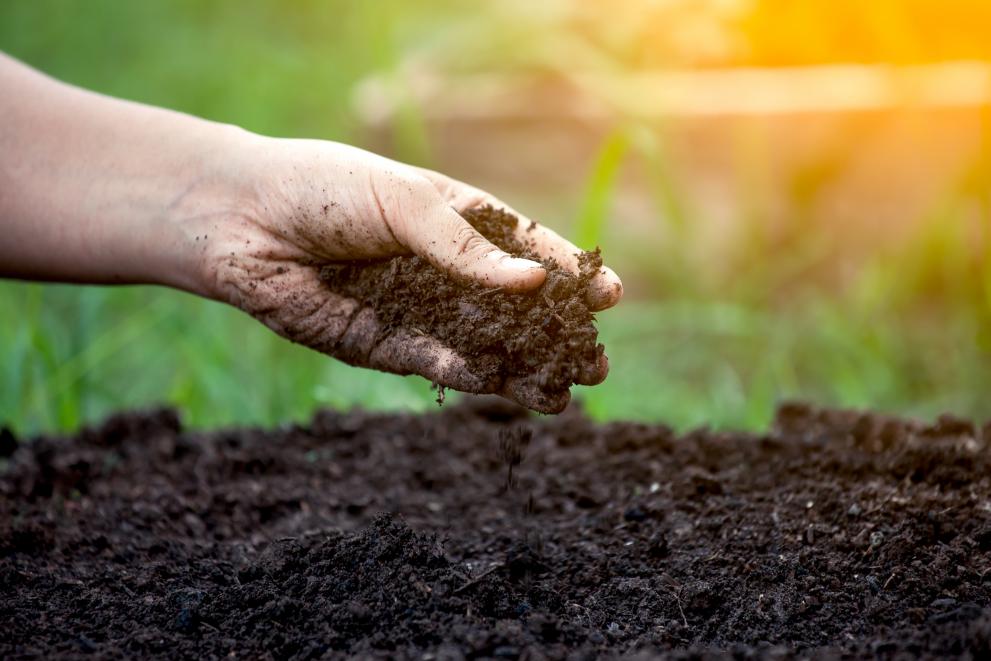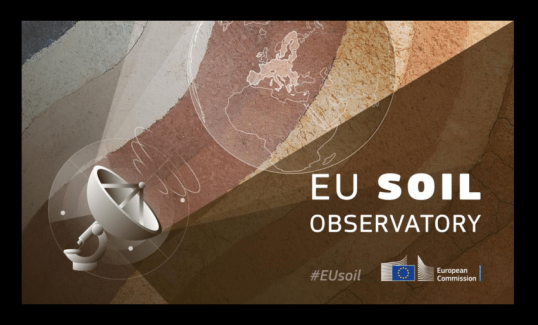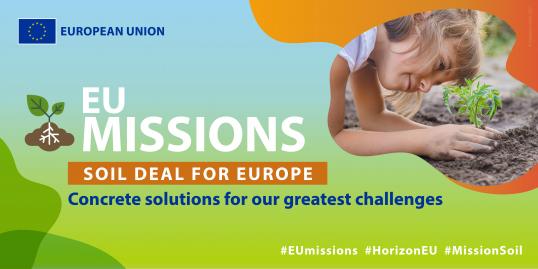
Maintaining and restoring our soils is key to achieve climate neutrality, zero pollution, sustainable food provision and a resilient environment. However, they are a fragile and finite resource and they are currently at risk, in Europe and beyond. This is why healthy soils are at the core of the European Green Deal.
In a recent article, scientists and policymakers from the Commission outline the key policies to achieve the ambitious soil objectives of the EU Green Deal.
Moreover, today the European Innovation Partnership for Agricultural Productivity and Sustainability is organising a brokerage event for farmers, researchers, and other relevant stakeholders to get involved in ‘the EU Mission: A Soil Deal for Europe’.
Soil hosts more than 25% of all biodiversity and provides 95-99% of food to 8 billion people. It provides us with clean water and it is the largest terrestrial pool of carbon. Keeping our soils healthy is essential for life on Earth.
The EU Soil Mission has recently opened a call for €95 million to identify strategies for land decontamination and re-use, and innovative ideas on how to implement carbon-farming practices, e.g. methods to maintain and enhance carbon in soils.
Soil degradation – a serious and growing problem
Soil degradation in the EU is an increasing problem that threatens our wellbeing, our economy and our prosperity.
In fact, scientists from the Joint Research Centre estimate that 13% of soils in the EU suffer from high levels of erosion with annual costs of € 1.25 billion due to loss in agricultural productivity. Every year, cultivated lands lose 7.4 million tonnes of carbon due to non-sustainable management. And according to a European Court of Auditors report, 25% of land in southern and eastern Europe is at high risk of desertification.
The problem is further exacerbated by the loss of soil resources due to covering the land for housing, roads or industry (‘soil sealing’) - predominantly at the expense of agricultural land-. The annual net land take was estimated at 440 km²/year in the period 2012-2018.
In addition, contamination with harmful substances damages soil quality. The JRC reported around 2.8 million potentially contaminated sites in the EU and neighbouring countries.
Soil priorities in the EU
In 2020, the European Commission presented an ambitious package of measures consisting of the biodiversity strategy for 2030, the Farm to Fork Strategy and the chemicals strategy as well as the circular economy action plan and the European Climate Law, all of which included actions to protect soils.
These were complemented by others, such as the Fit for 55 package, the zero pollution action plan, climate adaptation strategy, EU forest strategy, organic action plan, long term vision for rural areas and the EU soil strategy for 2030.
In addition, the European Commission will propose a Soil Health Law in 2023.
EU Soil Observatory
To support the above-mentioned EU policy initiatives, an EU Soil Observatory (EUSO) has recently been established. It will also help to monitor agricultural soils in the context of the Common Agricultural Policy (CAP) and the Clean Soil Outlook of the Zero Pollution Action Plan.
Specifically, the EU Soil Observatory aims to
- monitor soil-related EU policies with an enhanced EU Soil Indicator Dashboard,
- serve as an open forum for increasing awareness,
- provide a stronger European Soil Data Centre,
- integrate national soil monitoring systems with Land Use/Cover Area frame Survey (LUCAS) and
- support to Horizon Europe Research and Innovation programmes.
European Commission’s Soil Mission
In September 2021, the European Commission adopted five Research and Innovation Missions to bring concrete solutions in response to major societal challenges.
The Mission “A Soil Deal for Europe” will support the EU’s ambition to manage land in more sustainable ways, thereby supporting the EU’s Green Deal agenda and meeting global commitments such as the Sustainable Development Goals (SDGs).
The Soil Mission will establish 100 living labs and lighthouses to co-create, test and pioneer innovations for soil health at local level. It will also help develop a harmonised framework for soil monitoring in Europe, increase soil literacy in society and raise awareness on the vital importance of soils.
The EUSO will both support the implementation of the Soil Mission, and benefit from the outcomes of the Mission’s research and innovation on soils. The observatory will also focus on raising societal awareness of the value and importance of soils to the lives of citizens.
One of the main objectives of the mission is to build a robust, harmonised EU framework for soil monitoring and reporting.
In addition to being part of the Mission Owner Group with the Commission, the JRC will provide scientific and technical support to DG AGRI in its role as Mission Manager and Mission secretariat and RTD (as Deputy Mission Manager) in relation to the monitoring activities set out in the Soil Mission Implementation Plan.
Further information
Soil priorities in the European Union
Soil Mission Implementation Plan
Proposal for a Soil Health Mission: Caring for Soil is Caring for Life
Details
- Publication date
- 9 June 2022
- Author
- Joint Research Centre


